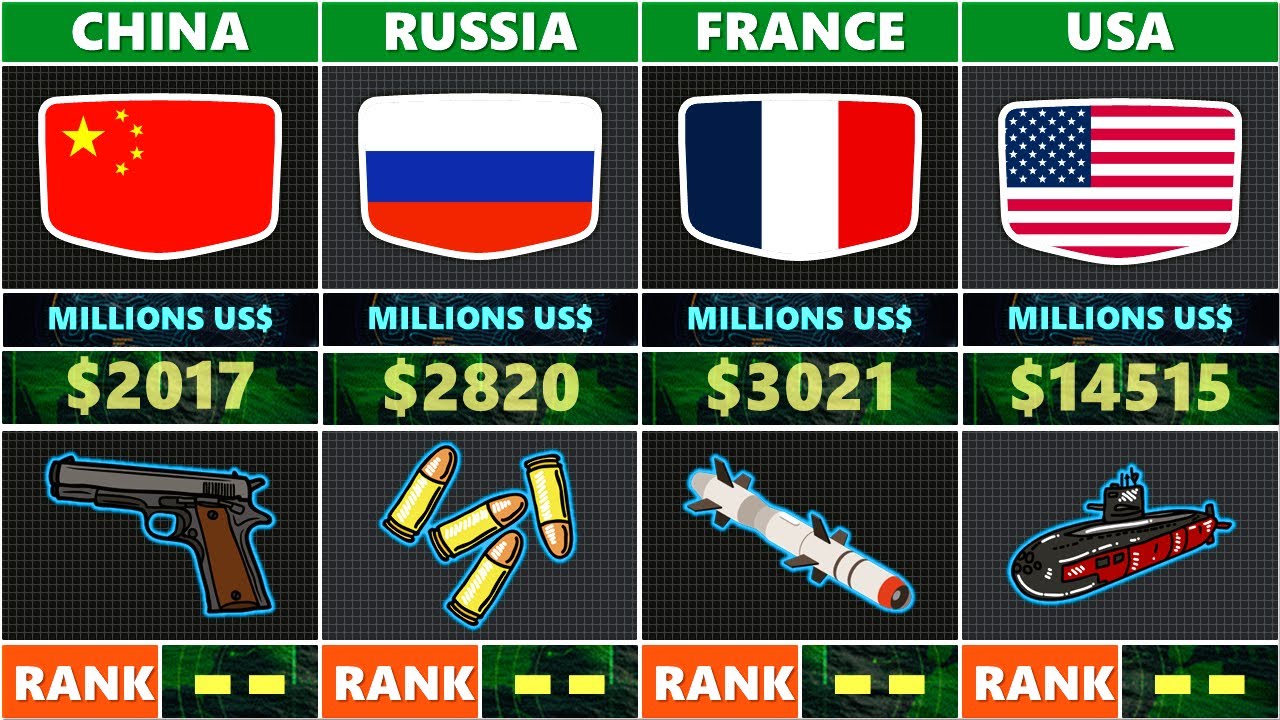The international arms trade is a multi-billion-dollar industry, shaping geopolitics and influencing conflicts around the world. From fighter jets to tanks and missiles, countries export defense equipment not just for profit, but to build alliances and extend influence. As of 2025, a handful of nations dominate the global arms export market, each playing a strategic role in the military balance of power.

The United States remains the world’s top arms exporter by a significant margin. With over 35% of the global arms market, American defense companies like Lockheed Martin, Boeing, and Raytheon supply cutting-edge technology to allies across NATO, the Indo-Pacific, and the Middle East. Key exports include the F-35 fighter jet, Patriot missile systems, and combat drones.
Russia ranks second, though its market share has declined in recent years due to sanctions, political tensions, and competition. Still, Russian-made systems like the S-400 air defense system, Su-30 fighter jets, and T-90 tanks remain popular in countries like India, Vietnam, and several African and Middle Eastern nations.
France, China, and Germany follow in the rankings, each with unique export profiles. France’s Dassault Rafale jets have seen success in Egypt, India, and the UAE, while China has expanded its reach with affordable, mass-produced systems like the Wing Loong drone and JF-17 fighter (co-developed with Pakistan). Germany focuses on high-quality ground vehicles, such as Leopard 2 tanks and submarines, often to NATO partners.
Arms exports are more than commerce—they are tools of diplomacy and leverage. Through military aid packages, joint ventures, and long-term maintenance contracts, exporting countries build strategic dependencies. As tensions rise in regions like Eastern Europe and the Indo-Pacific, the global arms race shows no signs of slowing—making export rankings a powerful indicator of influence in an increasingly militarized world.